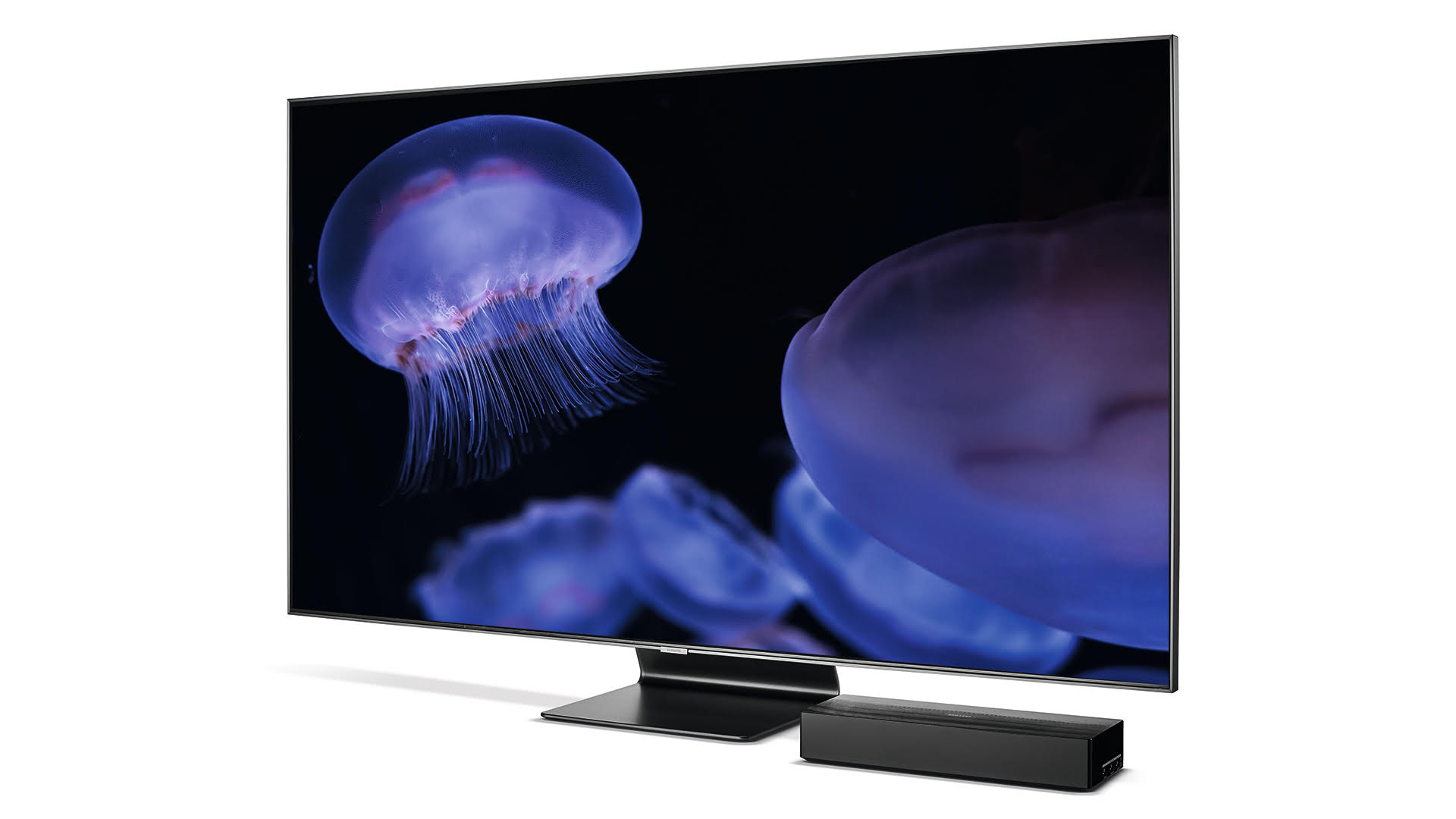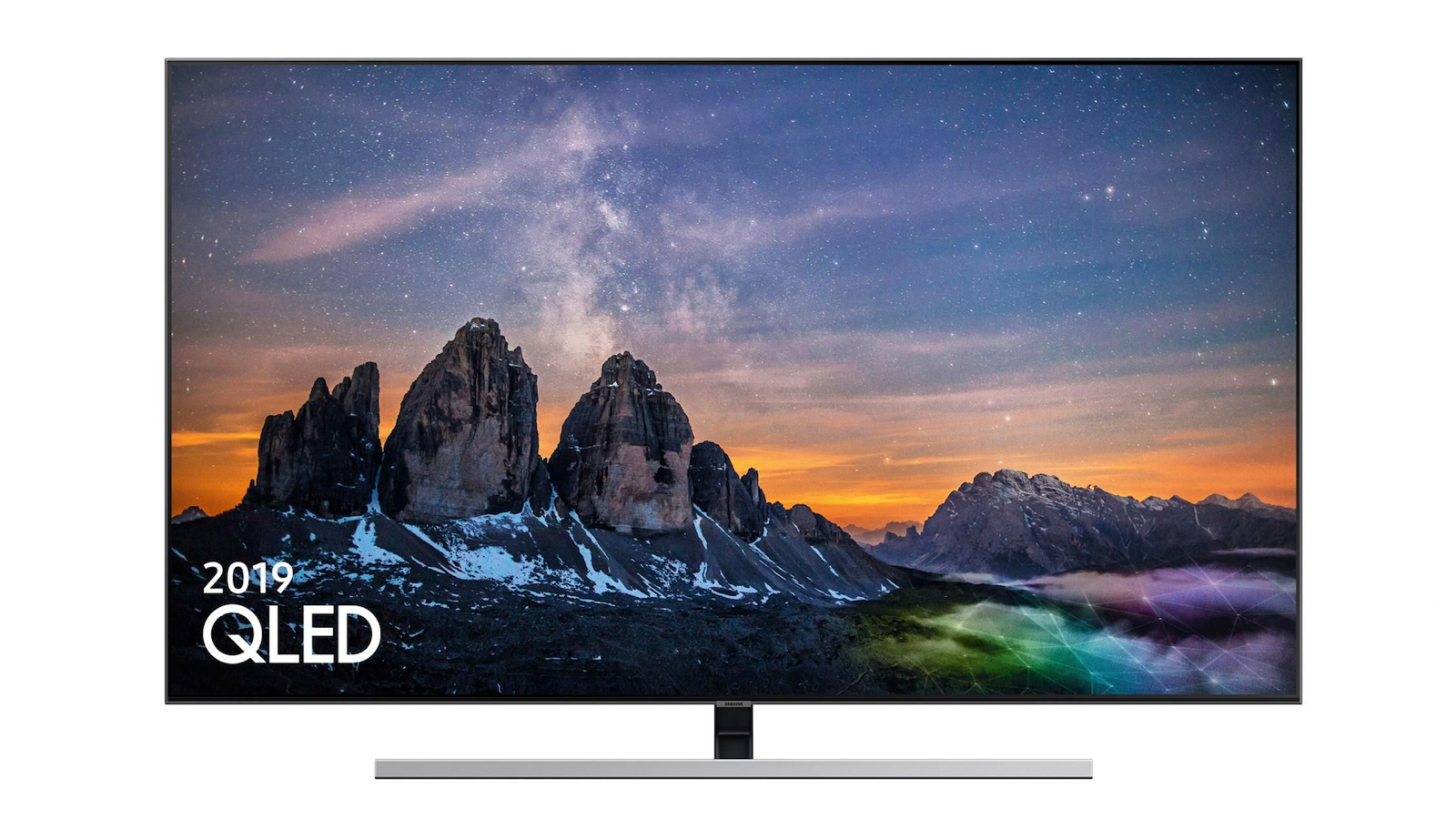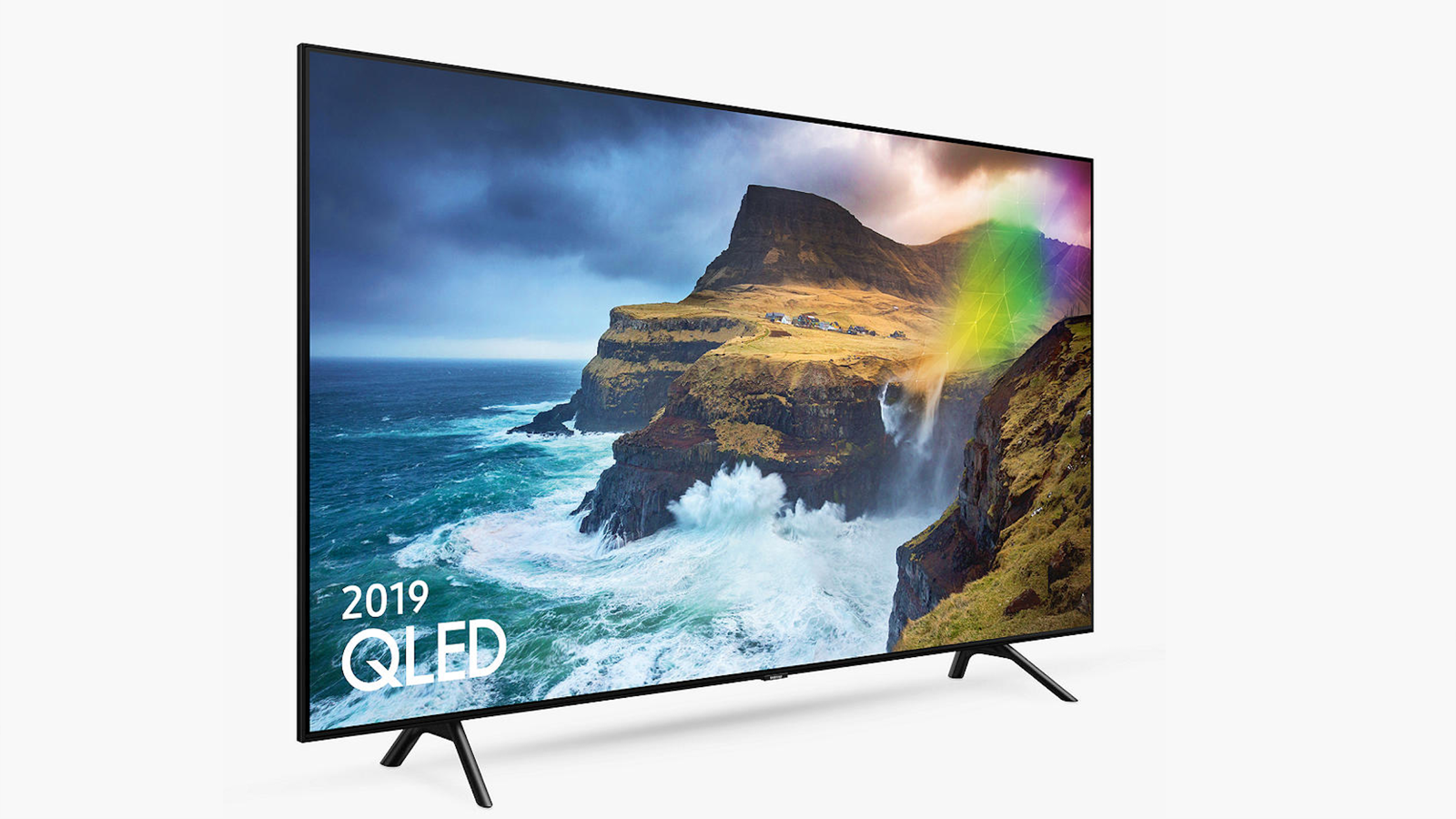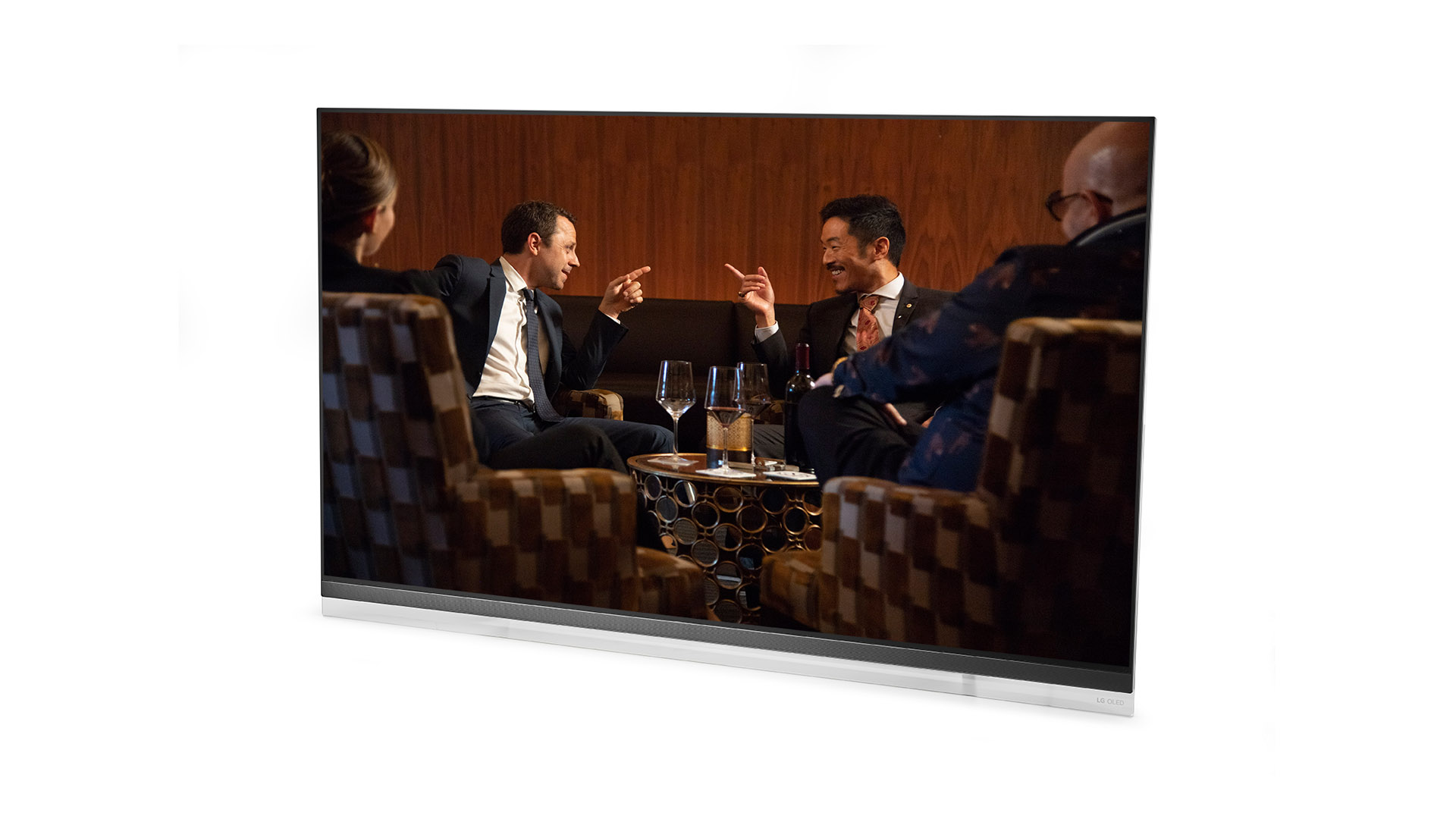Which 2019 Samsung QLED TV should you buy in the US?
Your complete guide to Samsung's premium TV line

While every other manufacturer continues its obsession with OLED, Samsung is resolutely sticking to its QLED (Quantum dot Light Emitting Diode) guns. And who can blame it? QLEDs are brighter, more vibrant and longer lasting than their OLED rivals.
But even if you’ve decided that QLED is the TV technology for you, there’s still the question of which QLED to buy. A couple of TV manufacturers have announced Quantum Dot ranges, but nobody's pushing the technology and TVs more than Samsung, and its 2019 range includes no fewer than five different QLED models, each available in a variety of sizes.
So, there's plenty of choice, but what are the differences? And which should you buy?
Q900 vs Q90R vs Q80R vs Q70R vs Q60R

At the top of Samsung’s 2019 range is the Q900 8K model. Available in 55in, 65in, 75in, 82in, 85in and 98in versions, it’s specification is very similar to that of the Q90R flagship 4K model, but with a higher peak brightness rating (4000nits rather than 2000nits) as well as all of the extra pixels necessary for native 8K.
The Q90R itself represents the current pinnacle of Samsung’s 4K QLED tech. Direct Full Array Elite means the backlight has in the region of 500 (Samsung won’t be more specific than that) individual dimming zones for greater contrast, the 2000nit peak brightness rating means its significantly punchier than any OLED, and Ultra Viewing Angle means colours stay vibrant and blacks deep almost regardless of where you sit in relation to the TV.
The Q900 and Q90R feature Samsung’s One Connect concept, which sees all connections moved to a separate box that’s connected to the screen using a single, almost impossibly thin cable, but from this point down, the One Connect box is gone.
The Q80R is an attempt to bring much of the Q90R’s qualities within the reach of more buyers. The One Connect box is gone, peak brightness is reduced to 1500nits and there are far fewer dimming zones, but this is still a much brighter TV than any OLED and you do still get the Ultra Viewing Angle tech.
Next up is the Q70R, which loses the Ultra Viewing Angle feature and is reduced in terms of peak brightness (which is rated to 1000nits) and dimming zones (which are said to be about half those of the Q80R). Predictably, it’s a good deal cheaper than the models above. What’s more, it’s available in a smaller size, with a 49in model on sale. Remember, there are currently no OLED TVs smaller than 55in.
Finally, the Q60R swaps the direct backlights of the more premium QLEDs for an edge backlight, which reduces set thickness but also results in a comparative loss of peak brightness and contrast control. The Q60R is available in loads of sizes, including 43in.
Every model in the range gets the same, excellent operating system with its abundant streaming apps (including, now, Apple’s iTunes), Ambient mode and voice control via Google Assistant, Amazon Alexa and Samsung’s own Bixby.
Q900 vs Q90R: should you buy the 8K or 4K flagship QLED TV?

In theory, at least, the only differences between the 2019 Q900 (known as the Q950R in the UK) and Q90R are to peak brightness (the Q900 is rated to 4000nits and the Q90R to 2000nits) and native resolution (the Q900 is 8K and the Q90R 4K), so the question is really whether you want 8K now and how much you’re prepared to pay for it.
The price difference is a fair bit smaller than it was when Samsung launched its 2018 8K sets, but you’re still looking at a $1500 premium to upgrade from a 65in Q90R ($3000) to a 65in Q900 ($4500). Consider that there’s still no proper 8K content available or even a vague date that it might appear on streaming services or discs, and that doesn’t instinctively look like money well spent. Still, those with big budgets might want to spend the extra for a bit of 8K future-proofing.
One final word of caution, though: we haven’t yet tested the 2019 version of the Q900, and while it should simply be a brighter, 8K version of the brilliant Q90R, last year’s Q900 was actually weaker than its 4K sibling (the Q9FN) in a couple of ways, making it the poorer choice overall. We hope to be reviewing the new Q900 very soon.
Q90R vs Q80R: which 4K QLED TV is best?

If you’ve decided to stick with 4K for your next TV, you might be wondering whether you really need to buy the flagship Q90R or would be better off saving yourself some money and buying the next model down, the Q80R.
Having tested the Q90R and Q85R (a UK-specific version of the Q80R that has the One Connect box) and considering the current price differences, we’d suggest that you’re best off spending the extra money and buying the Q90R. The premium isn’t insignificant ($800 at 65in), but the Q90R’s punchier, more dynamic picture is absolutely worth paying for.
Q70R vs Q67R vs Q60R: which is the best small Samsung QLED TV?

If you’re looking for a premium TV that’s smaller than 55in, your options are more limited than you might imagine - no-one makes an OLED that small, for starters. Thankfully, Samsung does make QLEDs below 55in, although they’re a fair way down the range.
If it’s a 49in model you’re after, you can choose between the Q70R and Q60R, with the big difference between the two being the backlight: the Q70R has a direct backlight while the Q60R has edge lighting.
We’ve not yet tested these models but the direct backlight should bring with it a number of benefits, particularly in terms of punch and contrast, and in theory at least it’s probably worth the extra $200 if you can afford it. We’ll be testing Samsung's 49in models as soon as possible and will update this piece once we’ve delivered our final verdicts.
Those looking for a 43in QLED don’t have a choice: it’s the Q60R or bust. The 43in Q60R will set you back $700, which is fairly steep for a TV this size, but the quantum dot tech should give it an advantage over many rivals. We’ll be testing it soon to find out.
Samsung 2019 QLED TVs vs LG 2019 OLED TVs

If you're not already set on a QLED TV, you're probably wondering whether an OLED makes more sense. The answer, unfortunately, isn't straight forward.
The best OLED around is the new LG C9, and while it isn't as bright or punchy as the Samsung Q90R, it does go even blacker, is dynamic in its own right, and is effortlessly natural.
Ultimately, each TV has its own comparative strengths and weaknesses and we love both of them. We'd suggest you buy whichever you can get the best deal on.
Of course, if you're after a TV smaller than 55in, an OLED isn't an option.
Get the What Hi-Fi? Newsletter
The latest hi-fi, home cinema and tech news, reviews, buying advice and deals, direct to your inbox.
Tom Parsons has been writing about TV, AV and hi-fi products (not to mention plenty of other 'gadgets' and even cars) for over 15 years. He began his career as What Hi-Fi?'s Staff Writer and is now the TV and AV Editor. In between, he worked as Reviews Editor and then Deputy Editor at Stuff, and over the years has had his work featured in publications such as T3, The Telegraph and Louder. He's also appeared on BBC News, BBC World Service, BBC Radio 4 and Sky Swipe. In his spare time Tom is a runner and gamer.

